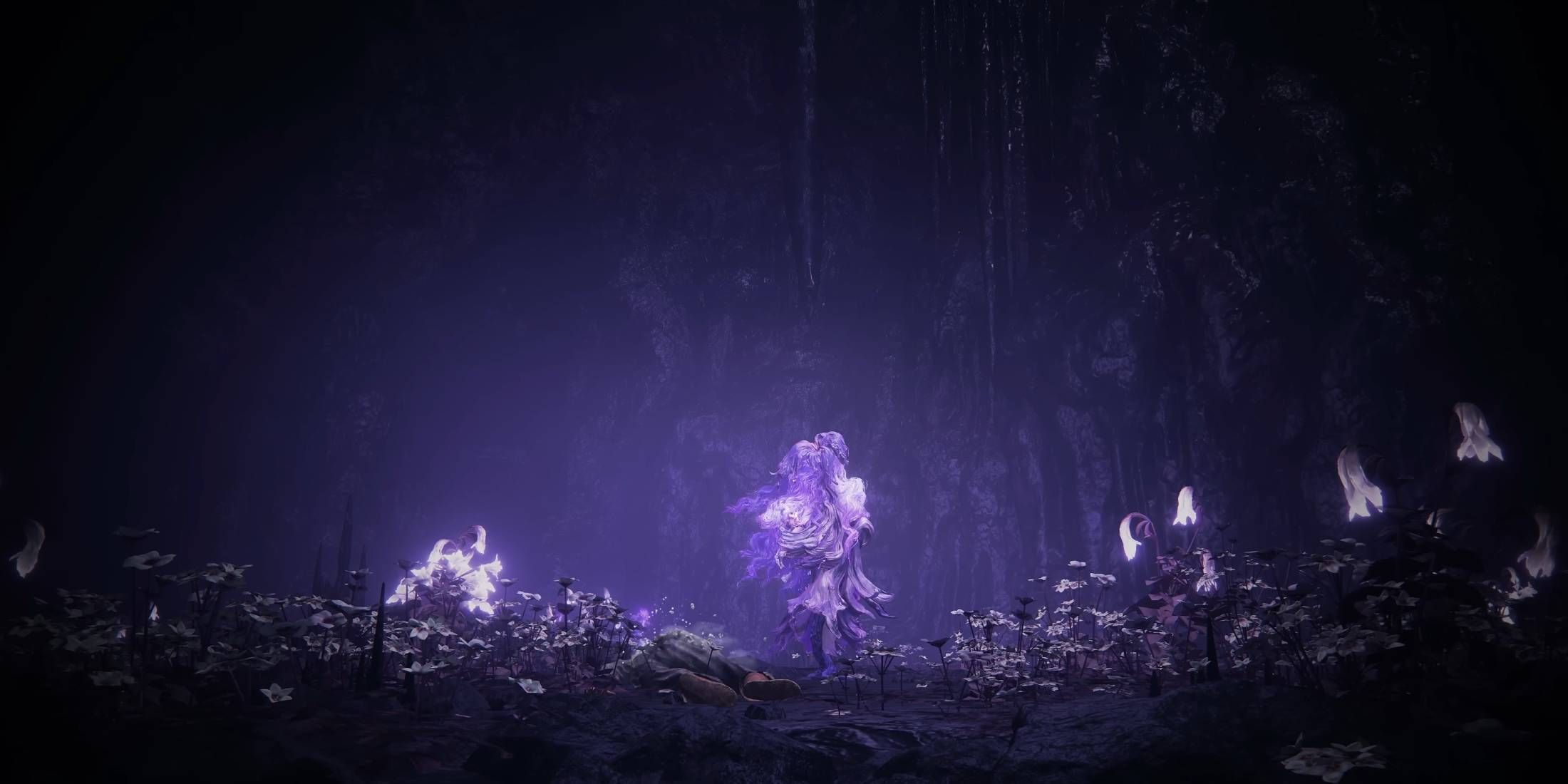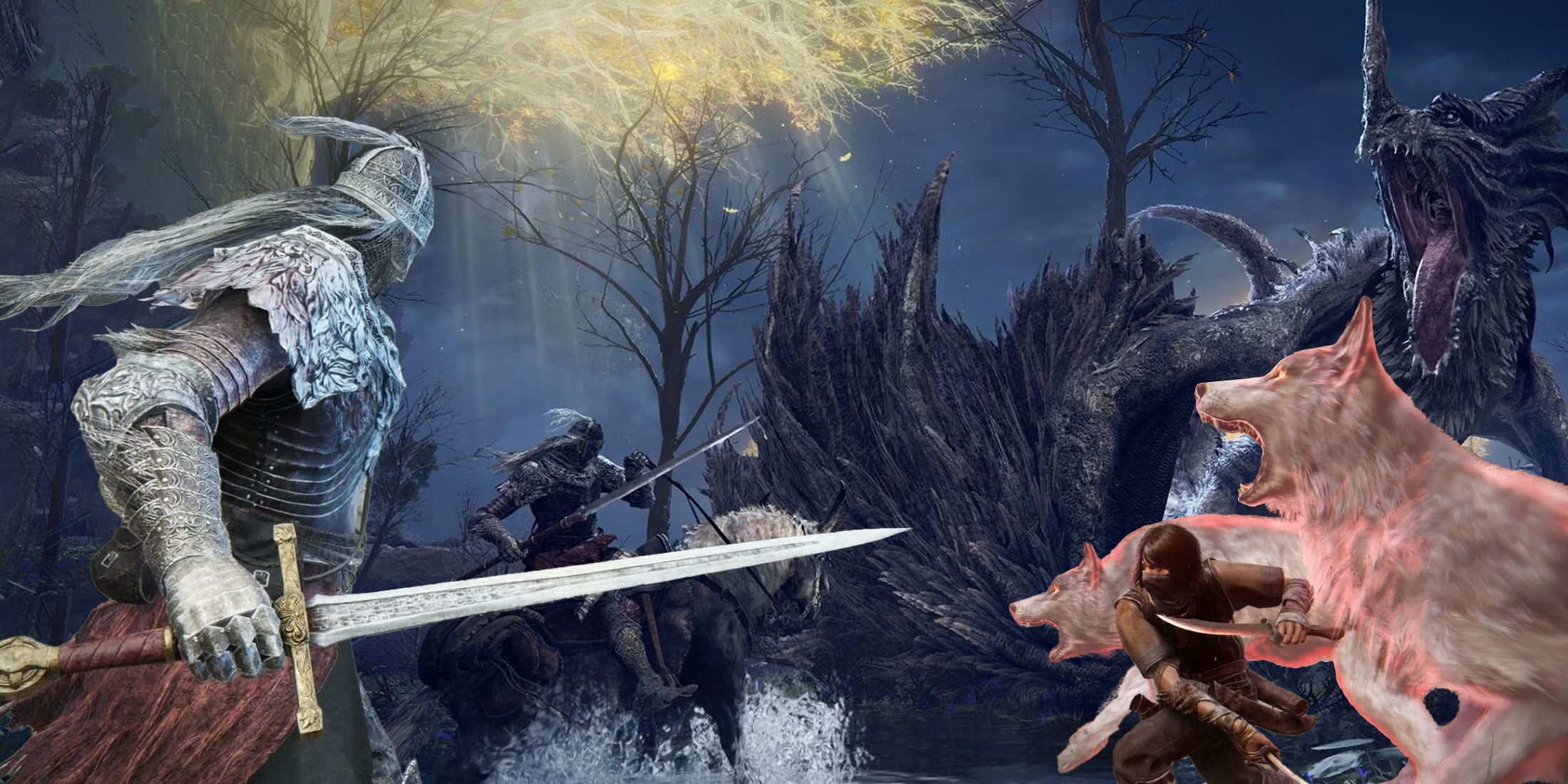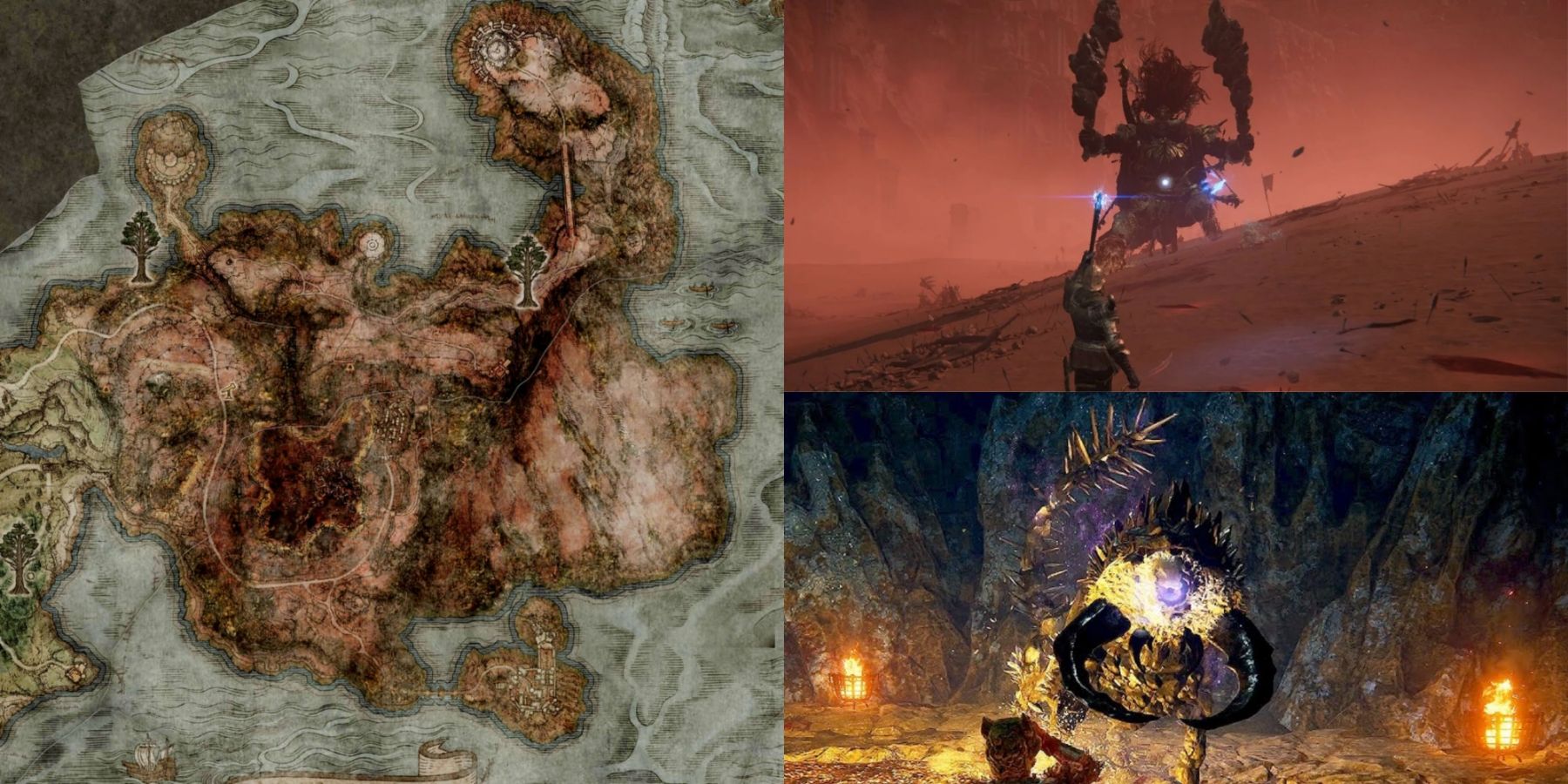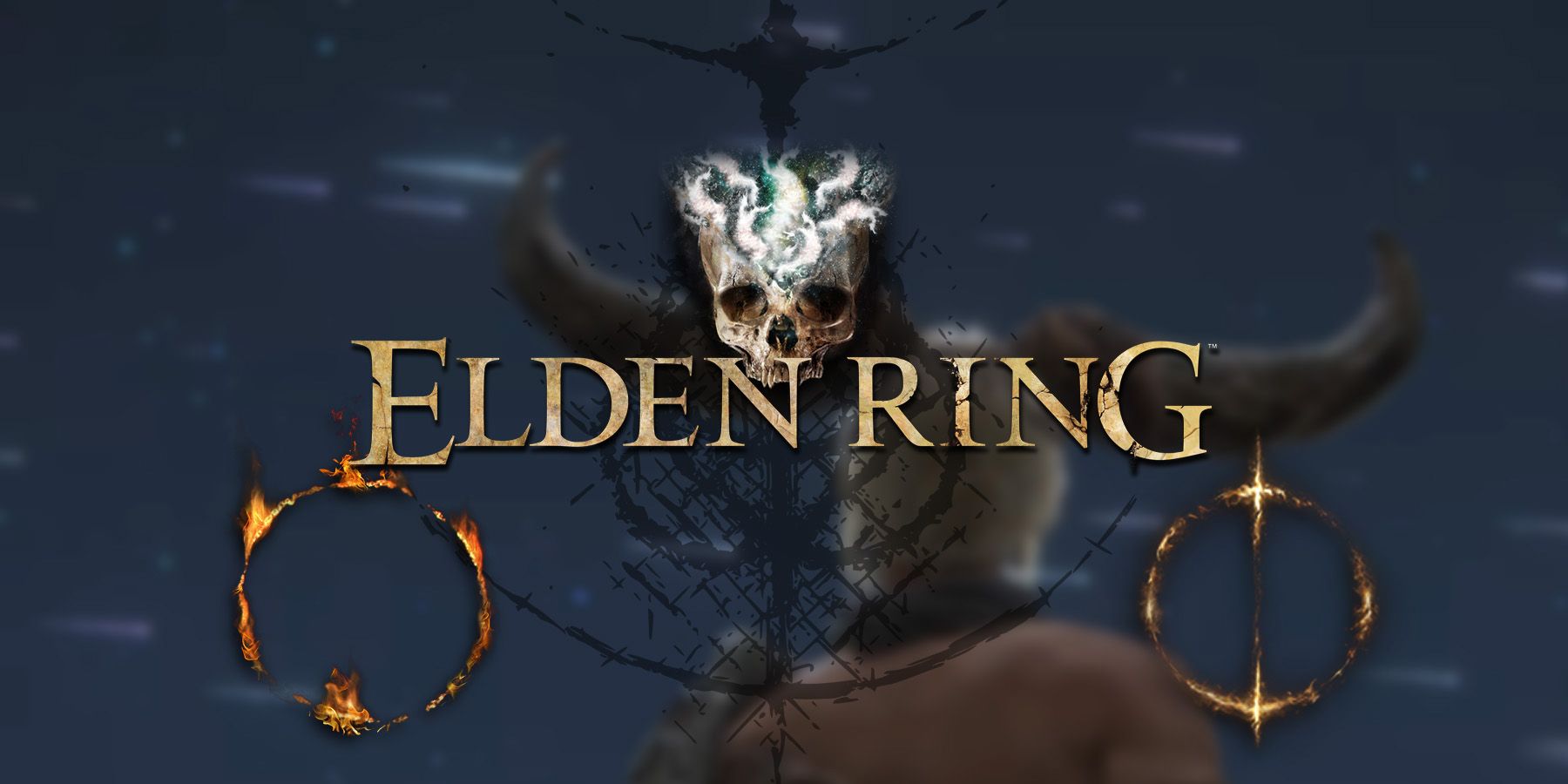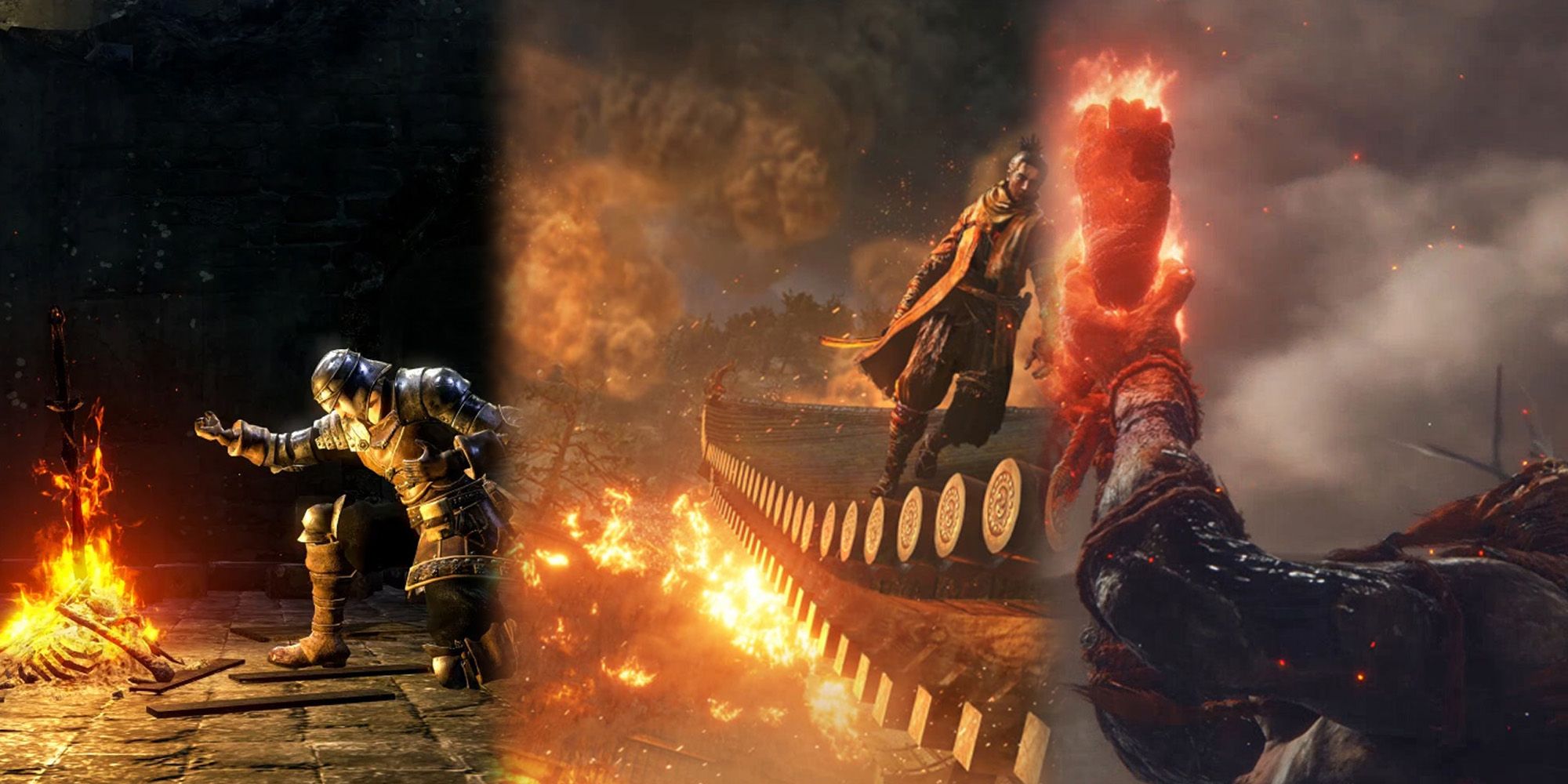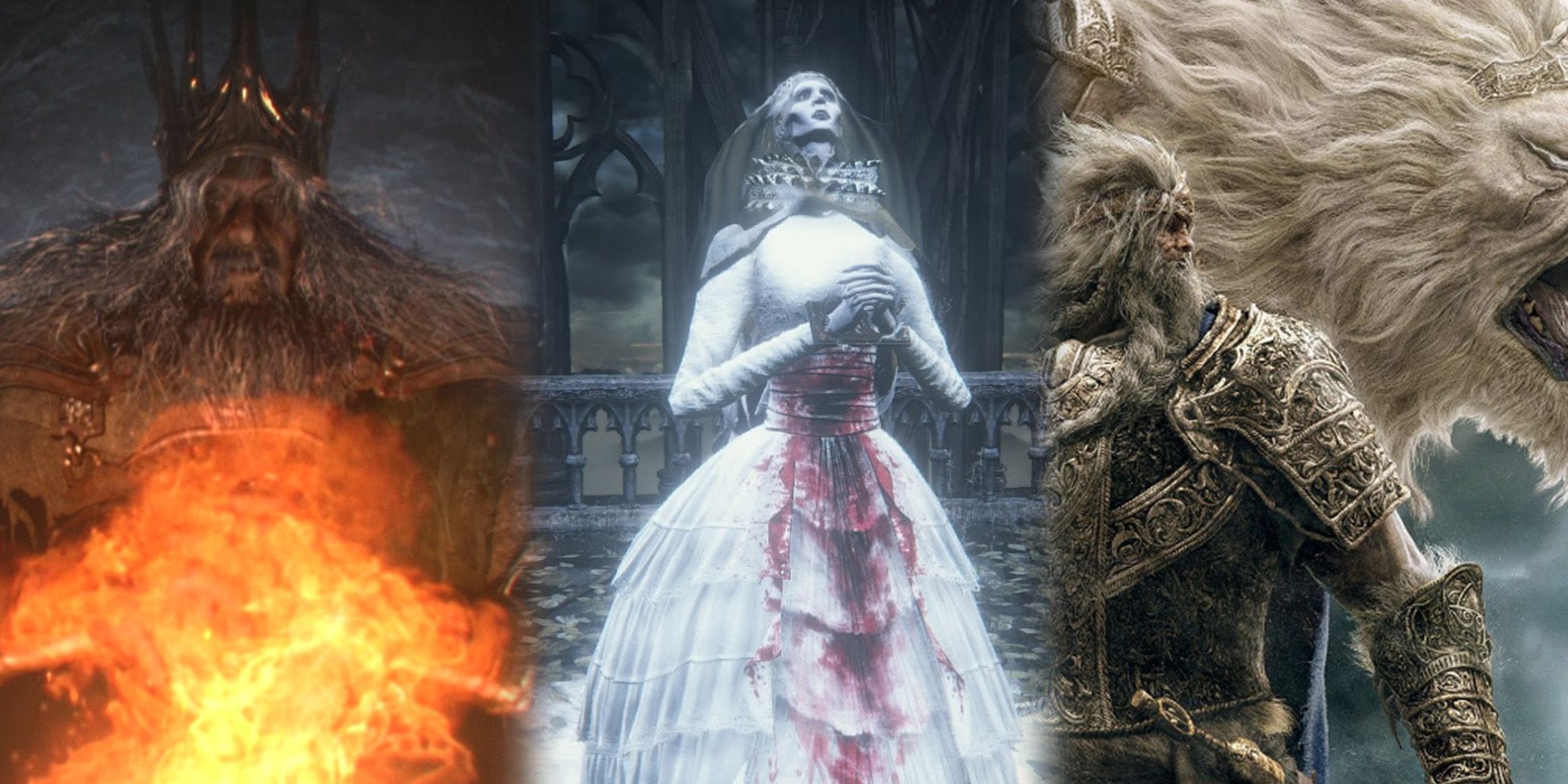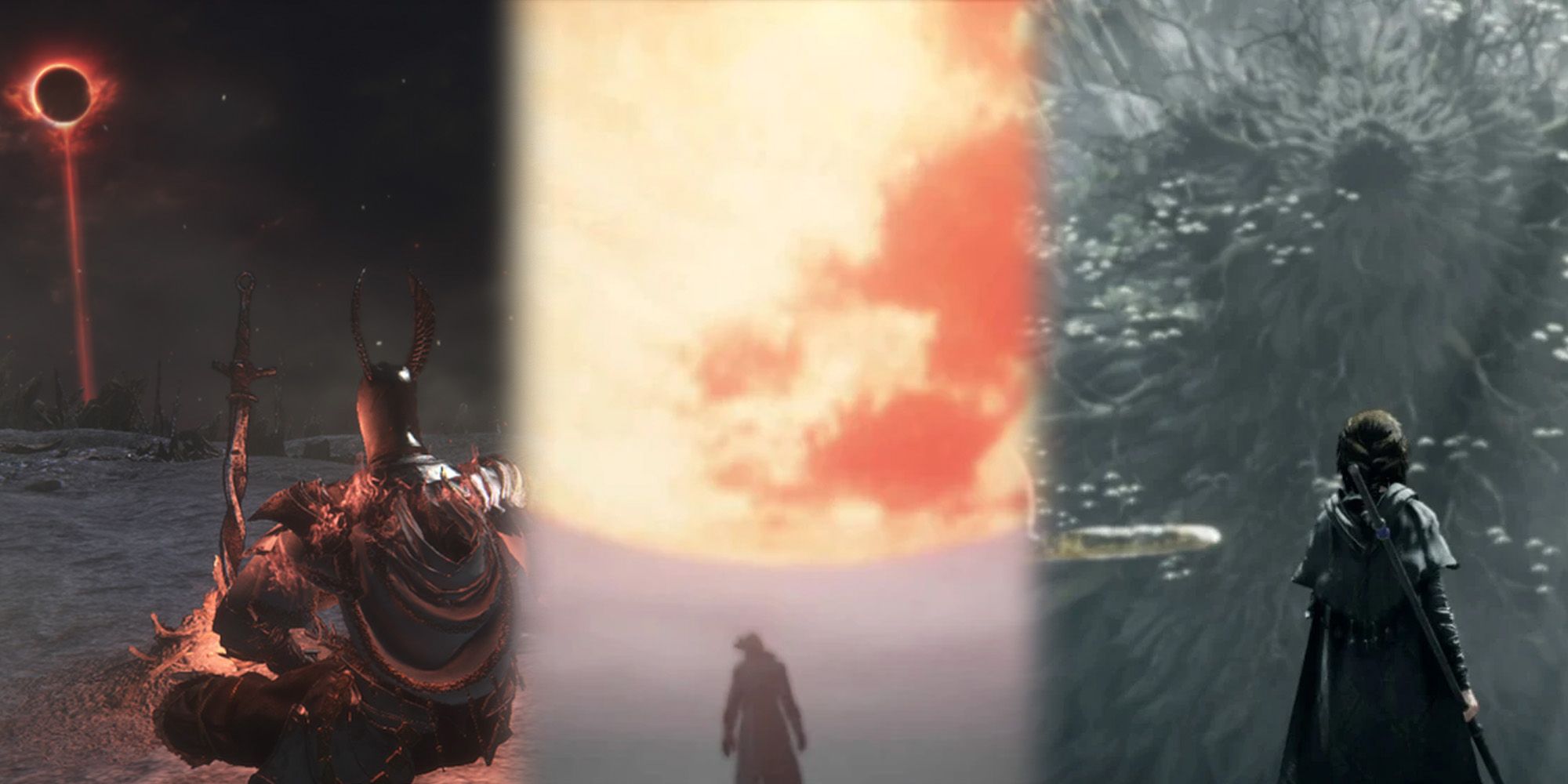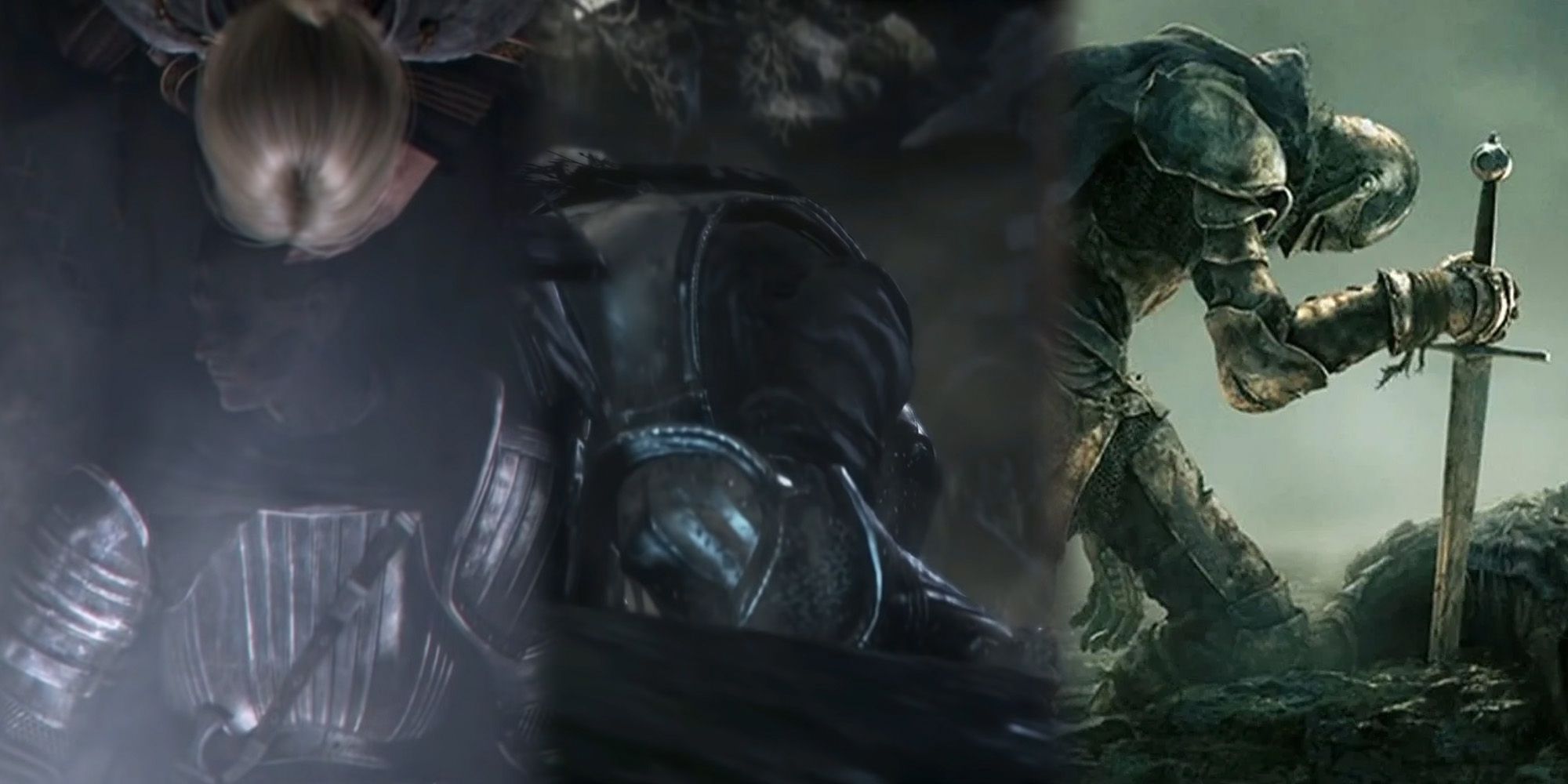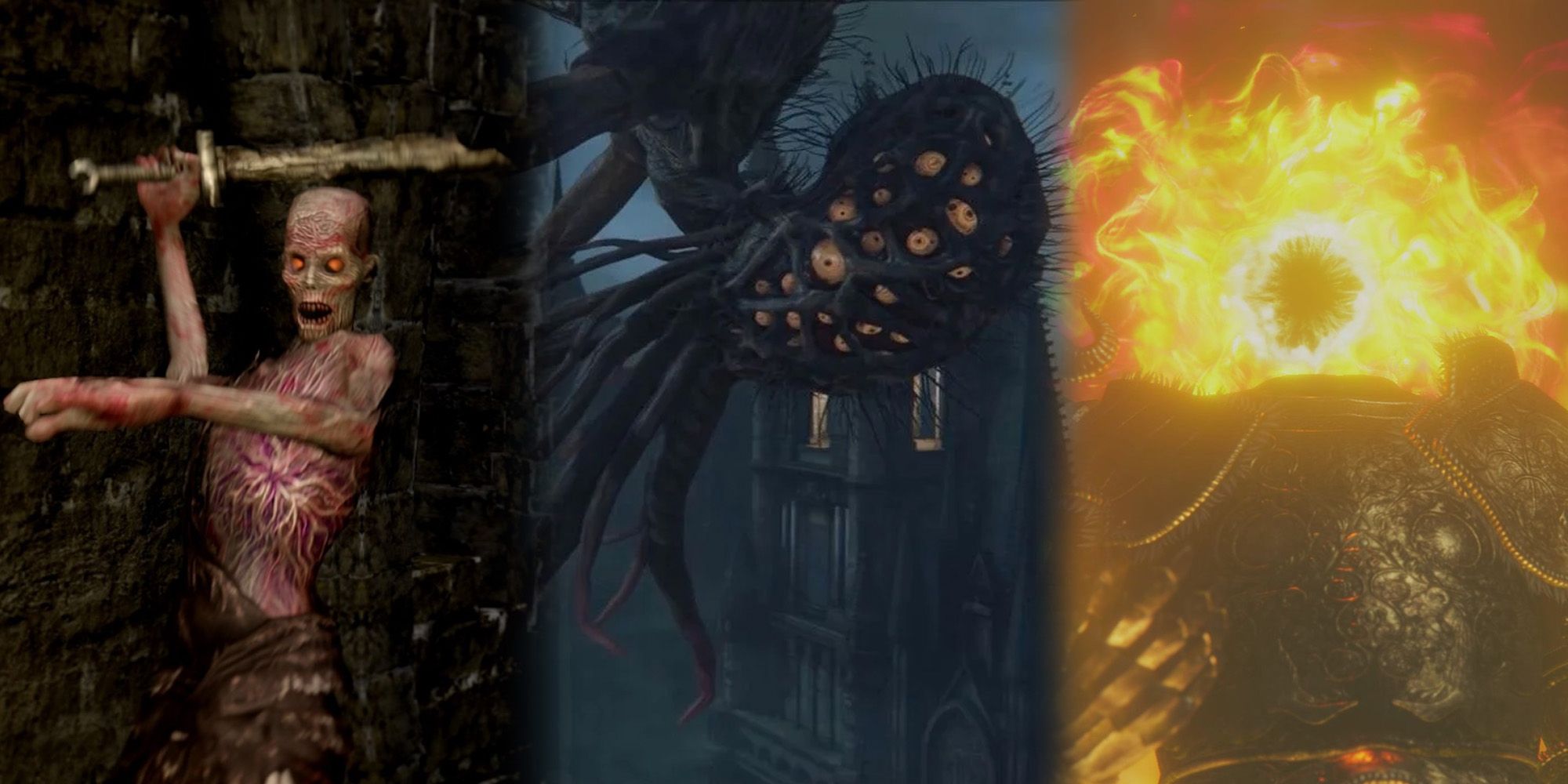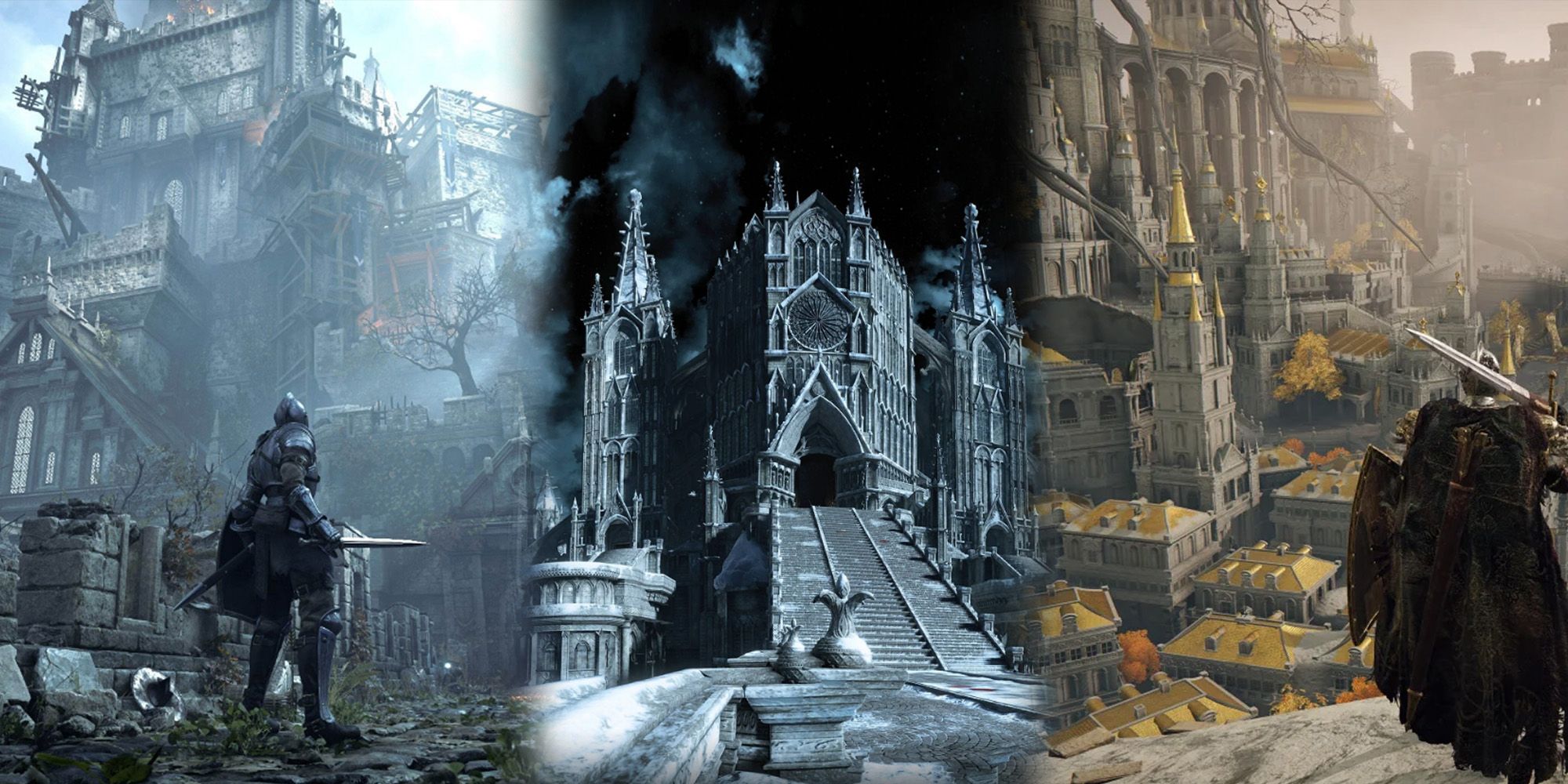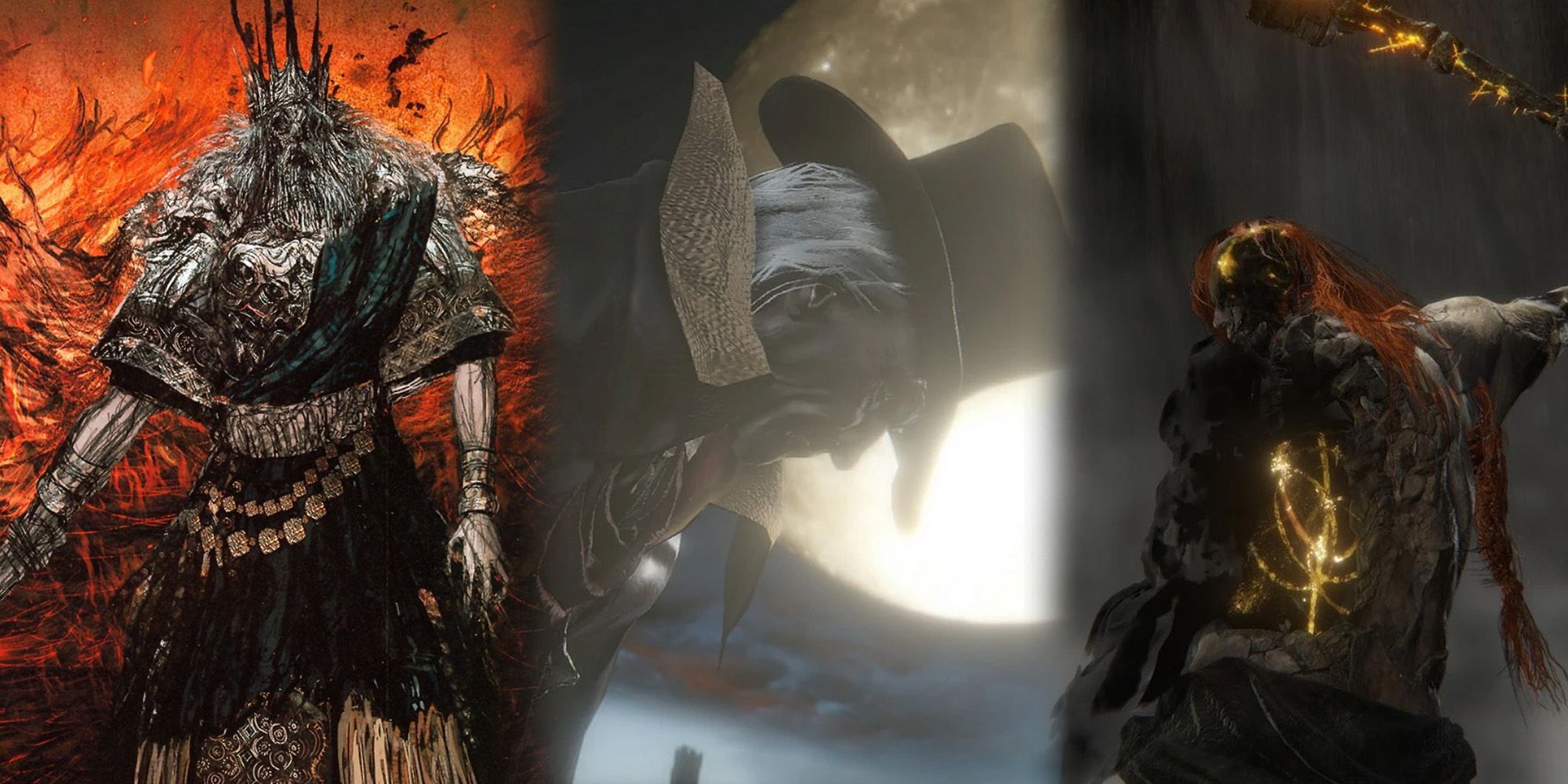Elden Ring, while very different from all the other past and future FromSoftware games, is still very obviously a FromSoft title. And, one of the largest reasons for this is that the overall ideologies, themes, and narrative devices that are seen in Elden Ring have a lot of similarities to all the FromSoft games before it.
It's clear as day that director Hidetaka Miyazaki likes to reuse story threads or concepts from past games in new ways in every title. So, let's take a look at some of the most prevalent narrative devices seen in Elden Ring and compare them to what came before.
7 Fire, Flames, & The Origins Of Fire
The concept of "fire" has always played a huge part in just about every FromSoftware-developed game since Demon's Souls. Even Bloodborne and Sekiro: Shadows Die Twice, two games that are wildly different from the Dark Souls franchise, have fire as a prevalent narrative device. To be more specific, there are a lot of ways fire is used in these games, such as fire representing strong ambition or emotion, fire "cleansing" the world before the start of a new cycle, or just simply fire as a destructive force. Just to name a few key examples from developer FromSoftware's "discography":
- Fire Magic in Demon's Souls is considered to be "witchcraft" and primal in nature.
- "Linking the Flame" in DS1 and DS3, as well as souls being personified as "flame-like", and finally the Chaos Flame that is seen in the Bed of Chaos.
- The beasts in Bloodborne fear fire and the Hunter's Dream is eventually burned down.
- The Demon of Hatred in Sekiro and Ashura, in general, is linked to the concept of "fire", plus Ashina meets its end in a sea of flame.
- Margit talks about the Tarnished's "flame of ambition" after defeating them in Elden Ring.
- Obviously, the absurdly tall Erdtree burning to start a new cycle and usher in a new Elden Lord.
6 Lineage, Order, & The Corruption Of The Gods
While it may not seem like an immediately apparent "trope" that FromSoftware falls into, the concept of "Lineage" and a corrupted greater power is always at the core of every one of these types of games. There's always some major family of Gods or ruling force that once had noble intentions but has now become something much more sinister. Ultimately, because a lot of these games have an end goal of the player becoming the next Lord or Ruler, it sort of has to incorporate the idea of "What makes a ruler" using the ruling parties of the past as examples. Just to name a few sources for this idea:
- King Allant in Demon's Souls, and the Boletarian royalty.
- The Gods in Dark Souls 1 follow a relatively similar noble history and naming convention as Elden Ring (Gwyn, Gwyndolin, Gwynevere).
- The Fragments of Manus' Soul in Dark Souls 2, otherwise known as the Sisters of Dark.
- The Pthumerian Civilization and Yharnam, Ptumerian Queen in Bloodborne. The Great Ones also sort of fill this role as well.
- The Ashina Clan in Sekiro: Shadows Die Twice.
- The Golden Order and the "Noble" Demigods in Elden Ring, as well as the naming conventions (Godfrey, Godrick, Godwyn). And, let's not even get into what exactly the Empyreans are or where they come from.
5 Cycles, Rebirth, & History Repeating Itself
The concept of the world following a "cycle" is once again something that has always shown itself in some fashion throughout the Soulsborne games. Of course, this concept isn't strictly tied to this company or franchise and is seen quite a bit throughout the gaming industry with games like Nier Automata or Bioshock Infinite.
Essentially, this concept refers to the age-old saying "history repeats itself" in the truest sense. No matter how grandiose the events of one game feel, it's just one cycle of many in the endless expanse of time. In FromSoftware games, in particular, this concept is always personified with similar characters reappearing in future games with new names and motivations, or just even direct callouts to the "cycle" itself.
- Demon's Souls has the choice of giving yourself to the Old One or lulling it back to sleep, and this cycle keeps repeating.
- Dark Souls has the "linking of the flame" to re-ignite the age of prosperity and light.
- Dark Souls 2 shows that even if the Gods die, they'll come back again in new forms with the same general motivations (The Old Witch, King, Dead One, and Paledrake Souls). This game, in particular, really plays around with the concept of Souls "re-entering" the cycle and events repeating themselves.
- Dark Souls 3 brings this concept to the forefront where the Ashen fights against the fire-linkers from previous cycles in an attempt to break the cycle altogether.
- Bloodborne's recurring Hunter's Dream encapsulates this idea, as well as the cycle of making new Great Ones.
- Sekiro has characters desperately trying to break away from the cycle with Immortality.
- Elden Ring has the Crucible that came before the Erdtree, the cycle of picking a new Elden Lord, Leyndell already has Ash covering the area near the base of the Erdtree, signaling a previous cycle, and so on.
4 The Hollowed, The Ashen, & The Tarnished
This next one is just a good trope to use, as it always serves to make the player feel like they're overcoming insurmountable odds. Essentially, it's the idea that in every single From Software game, the player starts as a "nobody" or someone who is even lower than low, yet eventually fights against the Gods themselves.
- Demon's Soul's player character is literally just a random human that eventually becomes powerful enough to entice the Old One.
- Dark Souls 1 has the MC start as a "Hollow", one of the lowest forms of life in the land.
- Dark Souls 2's MC is very similar to DS1's, being a bearer of the curse looking for a cure to Hollowing.
- Dark Souls 3's is an "Ashen", someone who tried to link the First Flame and wasn't powerful enough to do so, being reduced to Ashes.
- Bloodborne's is just some random person who came to Yharnam in search of "Paleblood" and was tricked into joining the Hunt.
- Sekiro's "Wolf" is a failed Shinobi who would have died numerous times if not for Kuro's Immortality Gift.
- Elden Ring's Tarnished are a faction of people who were banished from the Lands Between with Godfrey, had their Grace taken, and were told they couldn't return until after their deaths.
3 Those Who Follow Chaos, Have Eyes On The Inside, & Worship The Frenzied Flame
This theme has to be one of the most fun to explore out of all of them because a lot of it has to do with the idea of exploring knowledge and "truths" literally outside the realm of human comprehension.
Hidetaka Miyazaki really seems to love to include some sort of "pure chaos" faction in all of his games that either aspire to ruin the world and reduce it all to nothing, or are incomprehensible in their pursuits, and can only be perceived as "insane".
- Demon's Soul's Order of the Soul that Yurt and Mephistopheles are a part of, or just the Demon Race that Allant allied himself with.
- Dark Soul 1 and 2's fully-Hollowed people as well as anyone who sides with Chaos (The Bed of Chaos) or the Abyss (Manus).
- The entire "Insight" mechanic of Bloodborne plays into this concept, and Bloodborne, in general, has this as one of its main narrative devices. Almost anyone who seeks to learn the truth about the Hunt, the Pthumerians, or the Great Ones seems to slowly lose themselves to insanity at some point.
- Sekiro has the Senpou Temple Monks who lost themselves pursuing Immortality, with Immortality in general seeming to ruin the minds of anyone who actively pursues it.
- Elden Ring has the Flame of Frenzy with people like Hyetta, Shabriri, and the Three Fingers representing it. And, even ignoring the Madness group, there's also Mogh's blood-crazed faction and Those Who Live in Death.
2 The World Explored Is Long Past Its Golden Age
This has to be the most beloved theme that the gaming world as a whole will never get tired of in FromSoftware titles. In every single game, without fail, the actual story the player gets to experience takes place long after the world around them was at its peak. Players are adventuring through a ruined world, long past its prime, and are encountering the "Gods" and "Heroes" of these settings after they've fallen from Grace. If the world isn't on the brink of destruction from the first minute the player starts the game, it's probably not a FromSoftware game.
- Demon's Soul's Boletaria has been covered by a fog that constantly creates Demons and Humanity itself is almost entirely extinct.
- Dark Souls 1's Lordran is about to crumble and desperately needs someone to rekindle the First Flame as Gwyn has been reduced to a husk of his former self.
- Dark Souls 2's the Drangleic have all lost their Kings to Darkness, the Abyss, or Chaos itself.
- Dark Souls 3's literal universe is being pulled together and is reviving the re-kindlers of the past in order to try and save it one last time.
- Bloodborne's Yharnam is in the midst of another nightmare and long past the age of discovery when it comes to the Beast Blood and the Old Ones. It's nothing more than a depraved land filled with Violence and sycophants.
- Sekiro's story takes place in Ashina, a land that was once renowned and unstoppable but is on the brink of being destroyed and invaded by the Interior Ministry.
- Elden Ring's Lands Between is long past the Golden Age, with their "God" crucified in the Erdtree, the Elden Ring long since Shattered, and the Demigods all at their weakest and most depraved after the Shattering Wars.
- This is also likely why almost all the NPC Quest Lines across the game ended in such sadness as well.
1 The Big Bad Is Washed Up & Weak But Can Still Wipe The Floor With The Player
And lastly, let's talk about the final or near-final bosses in all these games. There's a recurring joke whenever a new FromSoftware game is on the horizon, and it goes something like "Can't wait to fight an old man to sad music". And, this is exactly the "concept" that's being explored, as players almost always end their journey fighting against the previous or some previous ruler who would have wiped the floor with them in their prime, but is just a shell of their former self now.
- Demon's Soul's King Allant is nothing more than a Demon made to encapsulate Allant in his prime, and Allant himself is nothing more than a Demonic Grub.
- Dark Souls 1 has Gwyn who is essentially just Ash at this point, yet can still wipe the floor with any undead who can't parry.
- Dark Souls 2's King Vendrick (as well as all the DLC Kings) have long since succumbed to the Dark and to Hollowing. Vendrick himself is endless wandering in circles within his own Tomb, but still needs Giant's Souls to be carried by the player in order to reduce his absurd Damage Negation.
- Dark Souls 3 has Gael as well as the Soul of Cinder, both of which are incredibly powerful but are basically inhuman creatures at this point.
- Bloodbornehas Gerhman, The First Hunter, one of the greatest hunters of his age that is long past his prime and is nothing more than a puppet of the Moon Presence at this point.
- Sekiro is sort of an outlier, as the final boss can differ from an aged Isshin to Owl to a resurrected Isshin at his prime. Ignoring the last one, both Owl and Isshin are not at their peaks.
- Elden Ring'sRadagon of the Golden Order has essentially been reduced to a living vessel for the Elden Ring, and their body is crumbling in front of the player's eyes.
Elden Ring is available now for PC, PS4, PS5, Xbox One, and Xbox Series X.

